The Creamiest Hummus (No Ice Needed)
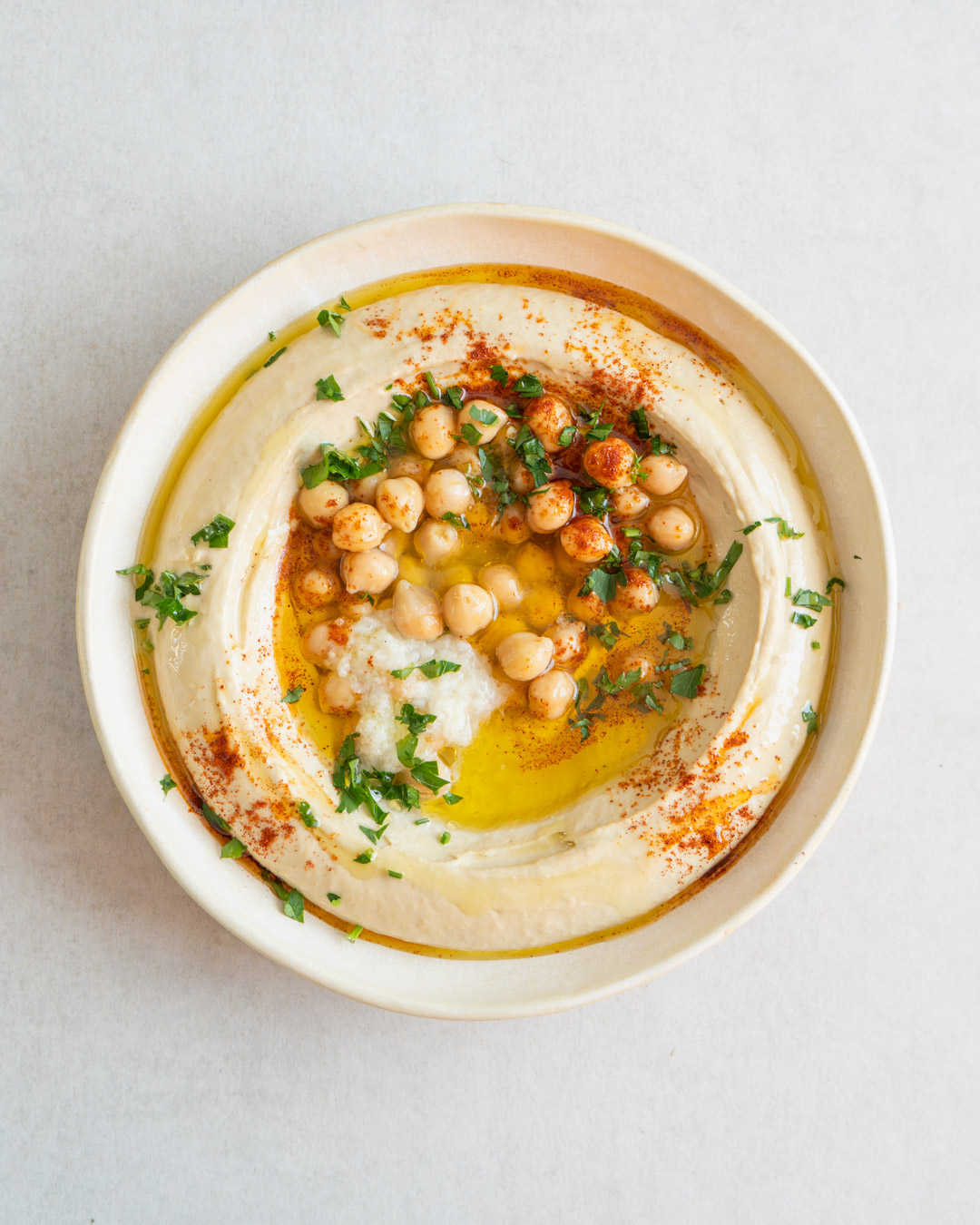
I’ve tried over 20 different methods to achieve the creamiest hummus. Using ice, a high-speed blender, freezing the chickpeas after cooking… it all didn’t work. In the end, the solution was incredibly simple. But more on that below.
Hummus is one of my favourite spreads to make from scratch. It’s not only incredibly delicious, it’s also a rich source of protein and healthy fats thanks to the chickpeas and tahini. Store-bought hummus simply never lives up to the creamy homemade version and is often made with vegetable or sunflower oils, whereas this recipe contains no added oil at all.
What is Hummus?
Hummus is a creamy, nutrient-packed dip made from chickpeas, tahini, fresh lemon juice and garlic. It’s a staple in Middle Eastern cuisine, loved for its rich, earthy flavor and smooth, velvety texture. Whether you’re spreading it on warm pita bread, using it as a dip for fresh vegetables or adding it to a mezze spread, hummus is a versatile and delicious dish that’s easy to make at home.
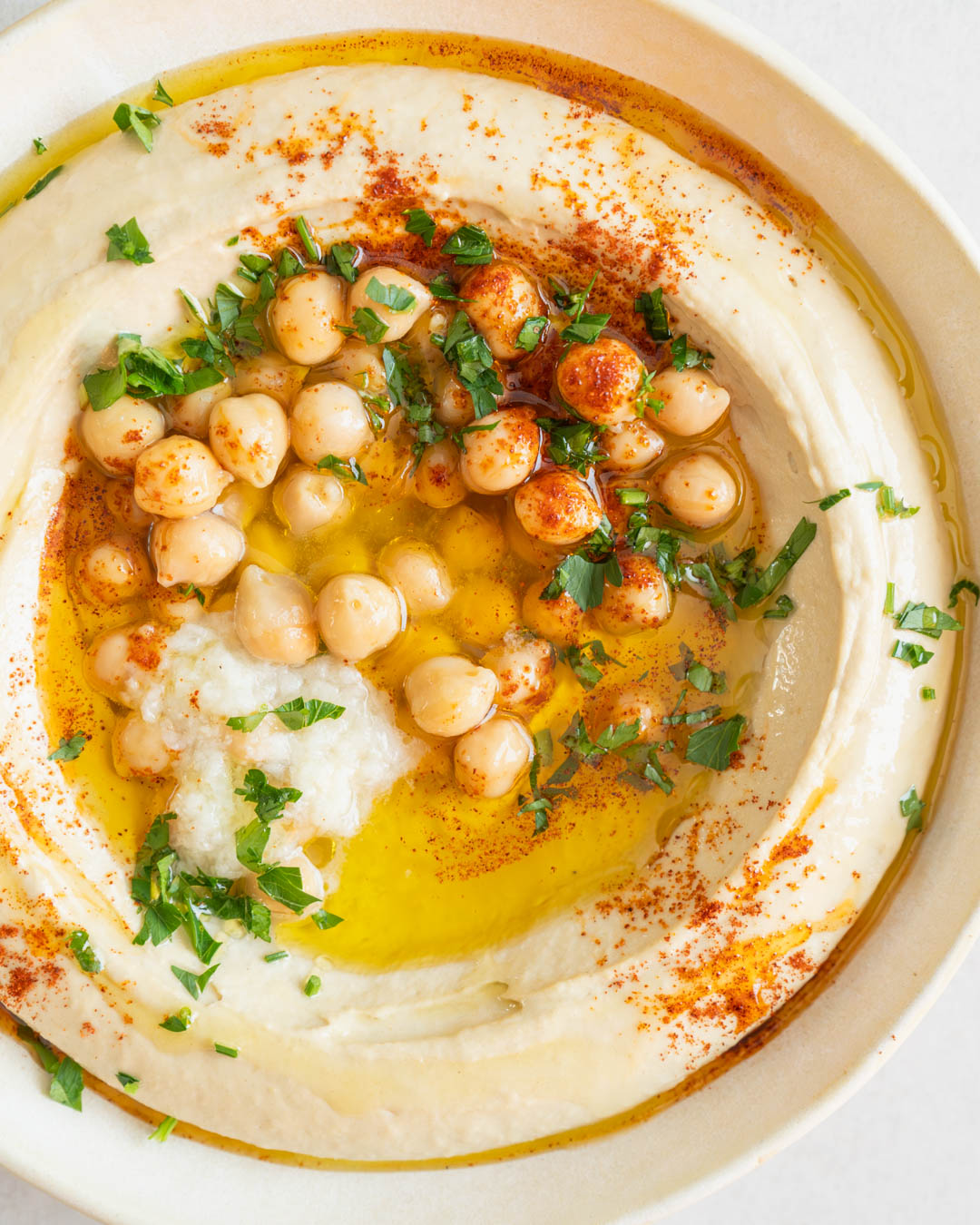
The History of Hummus
The origins of hummus date back centuries, with multiple Middle Eastern countries claiming it as their own. While no one can pinpoint exactly where it first appeared, references to chickpeas can be found in ancient Egyptian texts and variations of hummus have been enjoyed across the Middle East for generations.
The word “hummus” translates to chickpeas in Arabic, showing the importance of this one staple ingredients in the dish. Over time, different regions have developed their own versions—some with extra lemon juice for tanginess, others with more garlic and many of them with different kinds of toppings like a red chilli sauce or a spicy chilli, lemon and garlic mixture.
The Secret to the Creamiest Hummus
After trying over 20 different methods, the one trick that worked for me was to cook the chickpeas with baking soda. The key is to overcook them to a point where they literally fall apart by themselves in the pan. When you squeeze a cooked chickpea between your fingers, there should be no resistance whatsoever and when you taste one it should already be creamy by itself, without the skin still having a fibrous texture. If you cook them up to this point, the chickpeas will break down entirely whilst the tahini turns them into a creamy spread.
Ingredients You’ll Need to Make the Best Homemade Hummus + Substitutions
One of the best things about hummus is its simplicity. You only need a few basic ingredients to create this creamy, flavorful dip.
Hummus Ingredients:
- Chickpeas (Garbanzo Beans): The base of hummus, providing a creamy texture and a slightly nutty flavor. Dried chickpeas give the best overall results but canned chickpeas work well for convenience.
- Baking Soda: Helps break down the chickpeas during cooking, making them extra soft and easier to blend into a silky-smooth hummus.
- Garlic: Adds depth and a rich savory kick to the hummus. Infusing the garlic in lemon juice mellows its sharpness while keeping its bold flavor.
- Lemon Juice: Brightens the hummus and balances the earthy, creamy flavors of the chickpeas and tahini.
- Tahini (Sesame Paste): Gives hummus its signature nutty, rich flavor and ultra-creamy consistency. Opt for high-quality tahini made from pure sesame seeds.
Toppings:
- Garlic: Used to create an infused lemon-garlic mixture for an extra punch of flavor on top.
- Lemon Juice: Enhances freshness and adds an extra layer of tangy brightness when drizzled over the hummus before serving.
- Parsley: Adds color, freshness, and a mild herbal note to complement the creamy hummus.
- Extra Virgin Olive Oil: A generous drizzle enhances richness and adds a smooth, luxurious finish.
- Paprika: Provides a pop of color and a subtle fruity undertone.
How to Make Hummus from Scratch (Step-by-Step Guide)
Soak the chickpeas. Soak overnight with 1 tablespoon of the salt in around 1 litre of water.
Cook the chickpeas. The next day, drain and rinse the chickpeas and add them to a saucepan with the baking soda and 1 litre of water. Bring to a boil, then reduce the heat, skim off any foam and simmer uncovered for 30 minutes, or until the chickpeas are just tender.
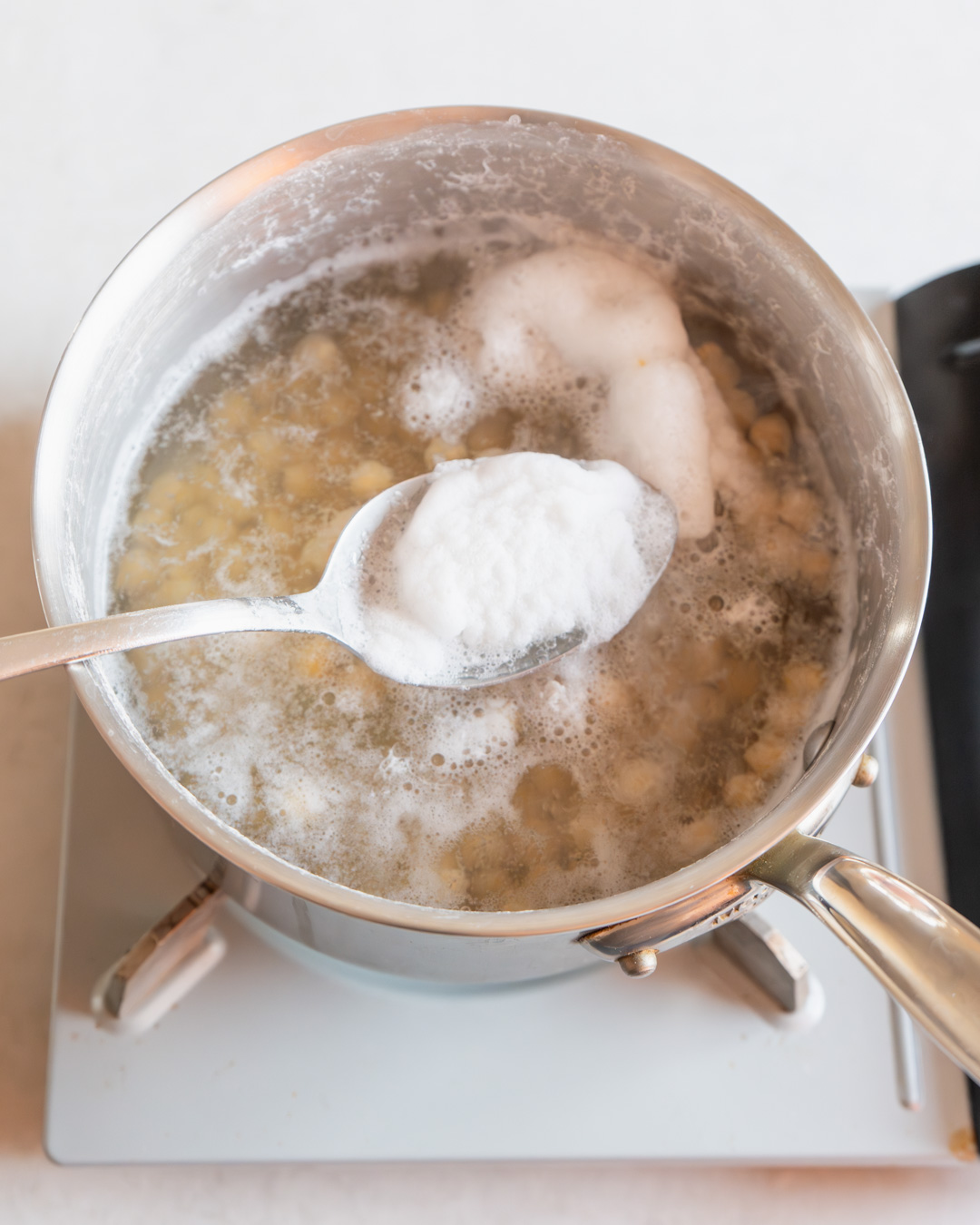
Set aside 3 tablespoons of them in a bowl along with around 100ml of the cooking liquid and ¼ teaspoon of salt. We’ll use these as a garnish later.
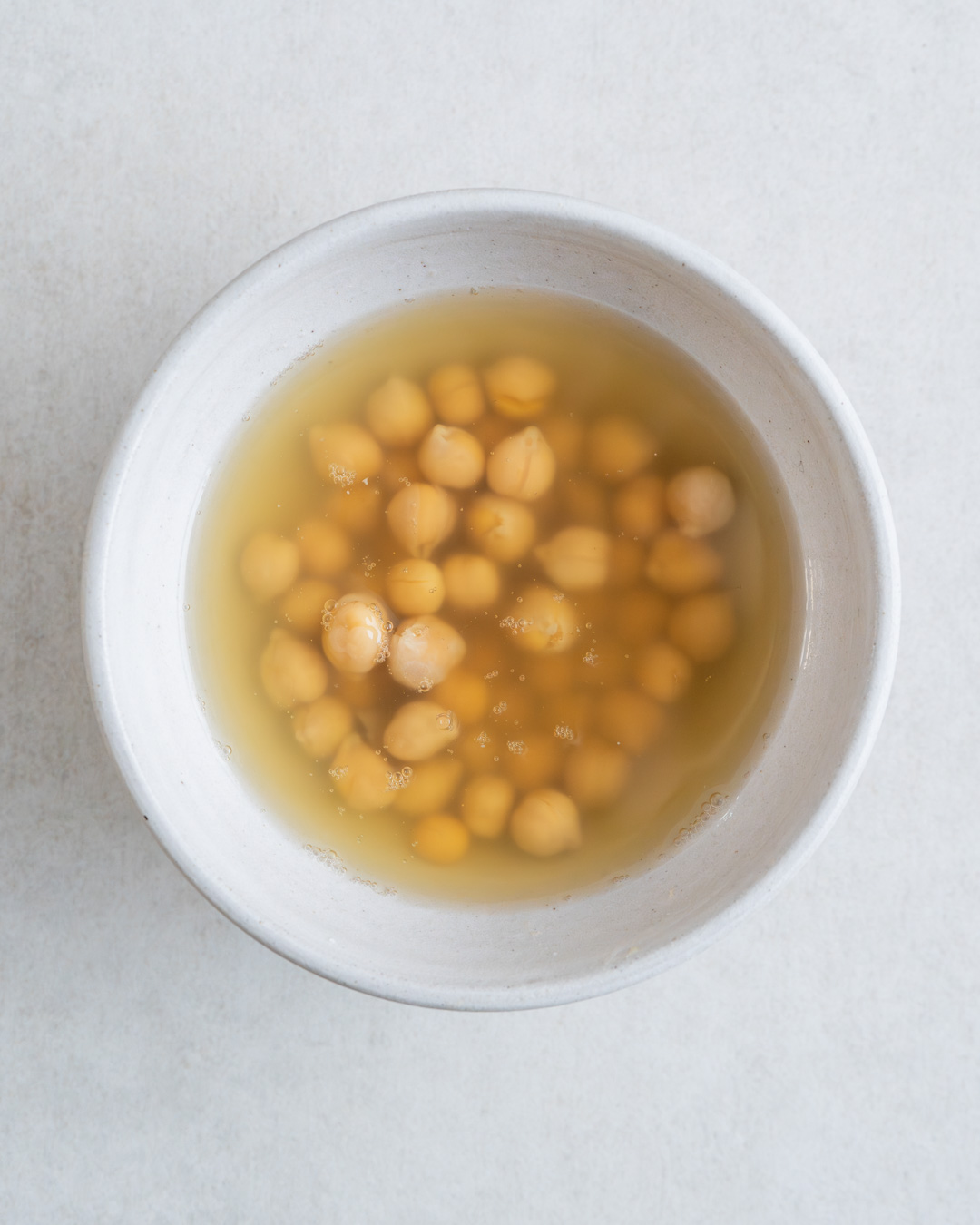
Continue cooking the remaining chickpeas for 25 minutes more or until they are completely soft and most of them have fallen apart. Drain well, but keep the cooking liquid.

Prepare the toppings. While the chickpeas are cooking, prepare the toppings: peel and finely grate or crush the garlic into a small bowl. Stir in the lemon juice and set aside until needed to infuse. Trim and discard the lower stems of the parsley, roughly chop the rest and refrigerate until needed.
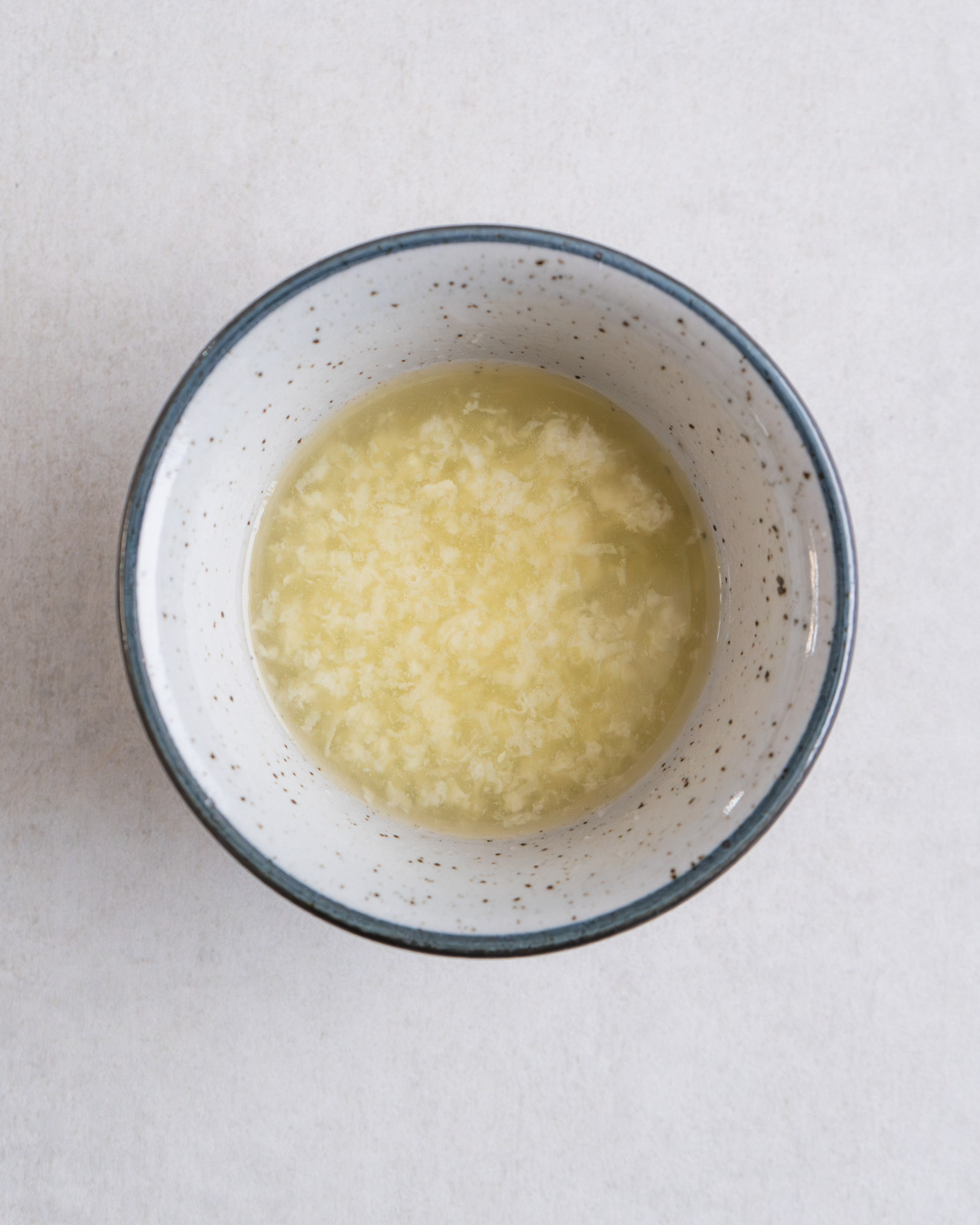
Blend the hummus. For the hummus, peel and finely grate or crush the garlic into a small bowl, stir in the lemon juice and leave to infuse for at least 10 minutes. While the chickpeas are still hot, tip them into a food processor. Strain the garlic-infused lemon juice into the food processor as well, squeezing out the juices with a spoon and discarding the leftover garlic (you can also add it, but it won’t blend smoothly).
Then add the tahini and ½ teaspoon of salt and blend for 1–2 minutes until completely smooth. It should be creamy but thick enough that it holds a peak when stirred, so adjust the texture by either adding some of the cooking liquid (to soften it) or extra tahini (to thicken it).
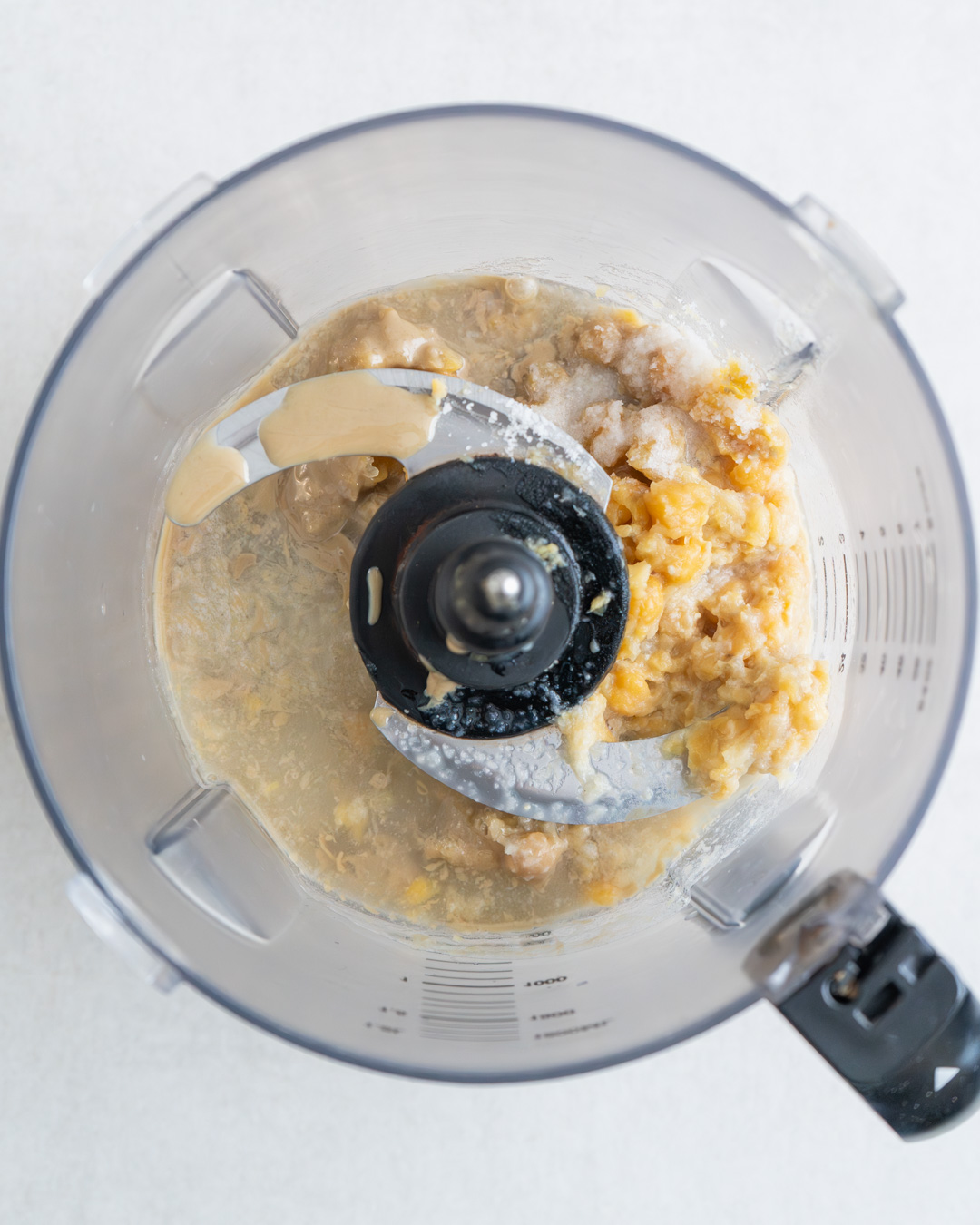
Serve and garnish. To serve, spread the hummus out on a plate, making a large well in the middle. Drain the reserved chickpeas and add them to the well, then drizzle with a generous amount of olive oil followed by the lemon and garlic mixture. Sprinkle the parsley over the chickpeas and add a pinch of paprika all over.
Why You’ll Love This Homemade Hummus Recipe
- Healthy & Nutritious: A great source of protein and healthy fats.
- Better Than Store-Bought: Fresher, creamier and free from preservatives.
- Versatile & Customizable: Easily add different flavors like roasted garlic, sun-dried tomatoes or spicy harissa.
- Perfect for Meal Prep: Make a big batch and enjoy it all week.
Other Dips You Might Like
How to Store Homemade Hummus
- Refrigeration: Store hummus in an airtight container in the fridge for up to 5 days. To keep it from drying out, drizzle a thin layer of olive oil on top before sealing.
- Pro Tip: If your hummus thickens in the fridge, stir in a little water or olive oil to restore its creamy texture.
Nutritional Benefits of Hummus
Chickpeas are an excellent source of protein, while tahini is high in healthy fats and minerals like iron and calcium, and garlic has been shown to have anti-inflammatory and immune-boosting properties. Together, these ingredients make hummus not only a tasty snack but also a nutrient-dense addition to any diet.
Dried vs. Tinned Chickpeas
I’d always recommend using dried chickpeas. Just remember to soak them the evening before. There are several environmental benefits to using dried chickpeas over tinned chickpeas. Firstly, the production of tinned chickpeas requires a significant amount of energy and resources, from the cultivation of the chickpeas to the processing, packaging, and transportation. This results in a larger carbon footprint compared to dried chickpeas, which require less processing and packaging.
Soil Health & Chickpeas
Chickpeas are also an excellent booster for soil health and I’d also urge you to see if any local producers are growing them. In the UK, for instance, the brilliant Hodmedod’s offers British-grown chickpeas, which means every time you eat chickpeas, you cut down your carbon footprint and directly support nature close to you. Benefits of growing chickpeas include:
Nitrogen fixation: Chickpeas are legumes that can fix atmospheric nitrogen into the soil through symbiotic relationships with nitrogen-fixing bacteria. This process increases soil fertility and reduces the need for synthetic fertilisers, which can harm soil health in the long run.
Soil structure improvement: Chickpea roots have a taproot system that can penetrate deep into the soil, improving soil structure and increasing water infiltration. This can prevent soil erosion and improve overall soil health.
Organic matter addition: Chickpea plants produce large amounts of organic matter, which can improve soil structure, increase water holding capacity, and provide essential nutrients to soil organisms.
Pest control: Chickpeas contain natural compounds that can repel pests, such as nematodes and soil-borne diseases, reducing the need for synthetic pesticides that can harm soil health.
**I receive a small commission from affiliate links on this page**
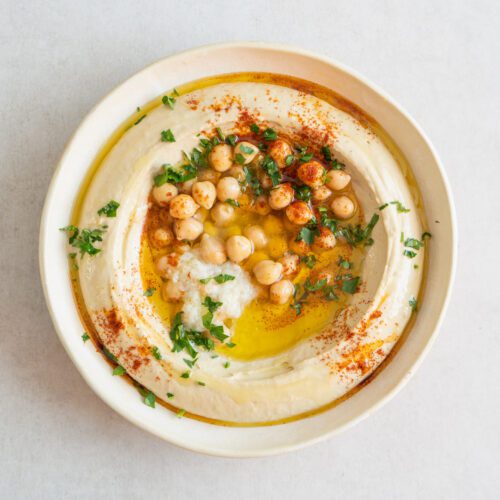
The Creamiest Hummus (No Ice Need
Equipment
- 1 Food Processor, (I use Ninja 3-1 Food Processor & Blender)
Ingredients
Hummus
- 110 g dried chickpeas (or 1x 400g can, see Notes below)
- 1 tbsp salt (plus ¾ tsp)
- 1 tsp baking soda
- 2 garlic cloves
- 70 ml lemon juice
- 160 g tahini
Toppings
- 1 large garlic clove
- 2 tbsp lemon juice
- a few sprigs of parsley
- extra virgin olive oil (to finish)
- 1 pinch of paprika
Instructions
- Soak the chickpeas overnight with 1 tablespoon (14g) of the salt in around 1 litre of water.
- The next day, drain and rinse the chickpeas and add them to a saucepan with the baking soda and 1 litre of water. Bring to a boil, then reduce the heat, skim off any foam and simmer uncovered for 30 minutes, or until the chickpeas are just tender. Set aside 3 tablespoons of them in a bowl along with around 100ml of the cooking liquid and ¼ teaspoon of salt. We’ll use these as a garnish later. Continue cooking the remaining chickpeas for 25 minutes more or until they are completely soft and most of them have fallen apart. Drain well, but keep the cooking liquid.
- While the chickpeas are cooking, prepare the toppings: peel and finely grate or crush the garlic into a small bowl. Stir in the lemon juice and set aside until needed to infuse. Trim and discard the lower stems of the parsley, roughly chop the rest and refrigerate until needed.
- For the hummus, peel and finely grate or crush the garlic into a small bowl, stir in the lemon juice and leave to infuse for at least 10 minutes. While the chickpeas are still hot, tip them into a food processor. Strain the garlic-infused lemon juice into the food processor as well, squeezing out the juices with a spoon and discarding the leftover garlic (you can also add it, but it won’t blend smoothly). Then add the tahini and ½ teaspoon of salt and blend for 1–2 minutes until completely smooth. It should be creamy but thick enough that it holds a peak when stirred, so adjust the texture by either adding some of the cooking liquid (to soften it) or extra tahini (to thicken it).
- To serve, spread the hummus out on a plate, making a large well in the middle. Drain the reserved chickpeas and add them to the well, then drizzle with a generous amount of olive oil followed by the lemon and garlic mixture. Sprinkle the parsley over the chickpeas and add a pinch of paprika all over.
Notes
- To use canned chickpeas, drain and rinse them and set 2 tablespoons aside for later. Transfer the rest to a saucepan and cover generously with water. Add 1 teaspoon of baking soda, bring to a boil, then simmer until they are completely soft and begin to fall apart (see image above), for around 10-15 minutes. Now drain and continue with the recipe above.
- Storage: Refrigerate for 4-5 days.

I made this today. My son and I enjoyed it very much; it was the best tasting hummus we have ever eaten. I will never by store bought again
That’s wonderful to hear, thanks for giving it a go!
Finally I have achieved “hummus independence”. Even following the recipe approximately, it worked.
Amazing! Store-bought hummus will never compare now haha!
I used double the quantities and feel that 1 teaspoon of bicarb was too much. Or perhaps I overcooked the chickpeas. But it is tasty and way better than some of the popular brands out there. Vielen dank!
It can vary. Depending on the heat source and size of the pan, the chickpeas take longer/cook quicker. It’s good to get a feeling for when they are completely soft so that they blend well and then use that as reference for future batches. Glad you liked it! ☺️
1tvm6b